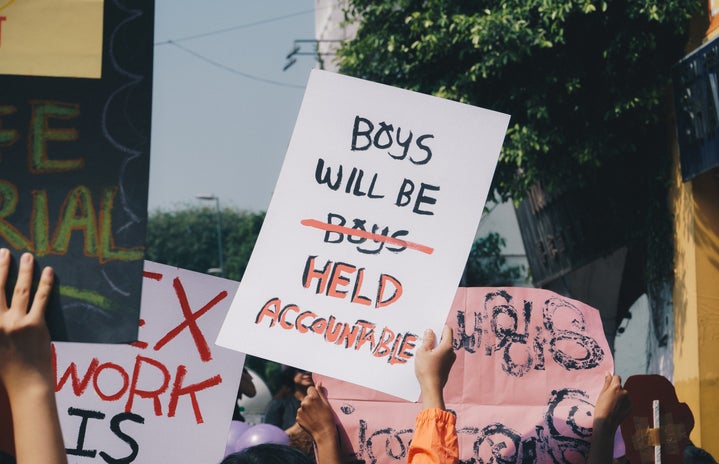Various protest materials have existed in the world since the 1500s, from the earliest broadsheets to engravings, prints, posters, murals, graffiti and political cartoons. These are often used to promote a certain emotion concerning a cause. While these materials are often done from a distance, in-person protests omit a different result, often using protest signs to further push the message.
With numerous protests happening nightly on college campuses, it draws attention to the history of protest signs, where they came from and how they have changed over time.
Picasso’s famous painting Guernica is regarded by many as one of the most moving and powerful anti-war pieces in history. It was a testimony to the horror that the Spanish Civil War was causing, and a warning of what could come in future wars. But you don’t have to be a famous artist to promote change in your community.
In America, protest signs and banners were very useful during the suffragette movement in the early 20th century. These early signs were very textual and simple. For example, “Votes for Women” was a frank demand, but stated what was necessary. Sometimes, groups of suffrage activists would promote a major rally by walking with signs naming the venue and time.
Slogans chosen by organizers of the demonstration helped with a consistency in messaging. These slogans were put on signs and pre-printed or painted in large quantities to maximize media coverage. They would be prepared beforehand and distributed to protestors. These signs were gathered together after the protest for future use and to avoid a bad reputation if trash was left behind.
By the later 1960s, signs were more diverse. Many organizers still sought to focus on a certain message, but through more individual interpretations, more messages were able to affect people differently.
Alone each sign holds a powerful message, but combined, the individual images and slogans tell a story.
As time went on, blunt statements were still used, such as the Memphis sanitation workers’ strike in 1968, which had very specific messaging: I AM A MAN. Other generic themes were also used as a starting point for the creative development of personal voice. For example, through the anti-war movement, colors, flower motifs and peace signs were popular.
Both types of messaging, specific blunt statements and graphically-focused designs, are still used today. Before the 2017 Women’s March, the sale of poster boards increased by 33 percent in the week before the march, and foam board sales increased by 42 percent. Soon after, the March for Life, organized for abortion opposition, had pre-printed thousands of signs, in order to have greater control over messaging to really drive a certain point.
After the killing of George Floyd in May 2020, Black Lives Matter protests happened across the country. During these protests, LA artist Gerg Ito put a pause on his own creation in order to set up sign making stations around various protests in LA. He supplied materials, snacks and water to give protestors the chance to use their words and be prepared for a long day at a protest.
In the past, due to the disposable form of cardboard and paper signs, many protest signs were damaged or destroyed after its purpose was done. Those that survived are now iconic and rare. Because of this, curators from three Smithsonian museums have begun collecting signs and other objects from BLM protests.
“Recognizing that the tragic killing of George Floyd has spurred a transformative time in U.S. history, the Smithsonian Institution is collecting today so that the world, in the present and future, can understand the role that race has played in our complicated 400-year history,” the Smithsonian said. “This coalition of museums will enable Smithsonian curators to work together with activists and groups on the ground to ensure that this grassroots-led community movement and pivotal moment is accurately documented.”
Throughout history, protest signs have allowed people to easily use their voice and participate in a cause they believe in, and they will continue to take place for as long as this system is successful.






